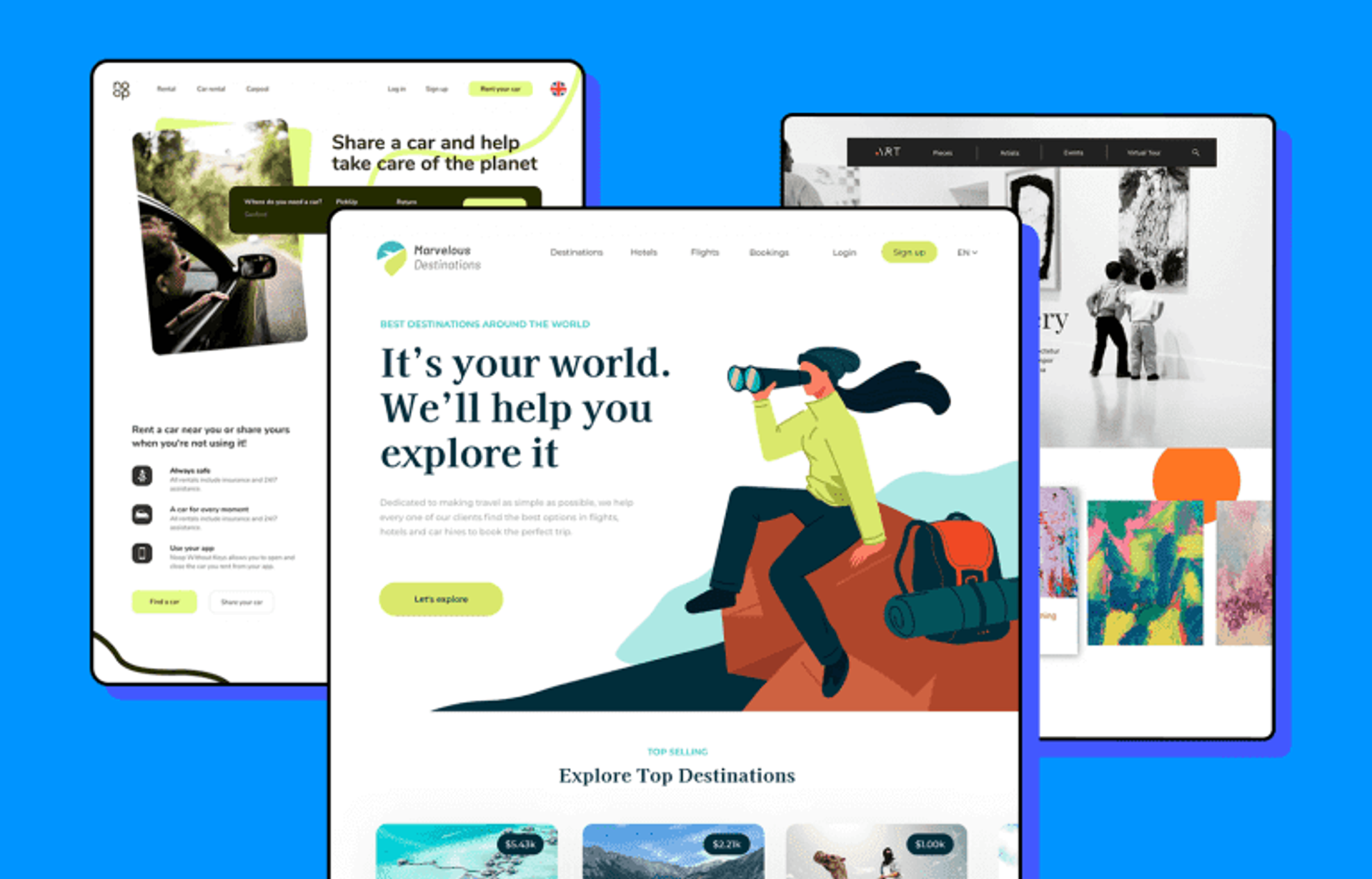Innovative Internet Layout Solutions for Modern and Engaging Sites
In the realm of web style, the pursuit of modern-day and engaging options has come to be increasingly vital for businesses intending to catch customer focus. By incorporating vibrant shade schemes, interactive aspects, and receptive formats, designers can produce experiences that not just resonate with customers however also improve brand name identification.
Accepting Bold Shade Schemes
In internet layout, the tactical use of bold color systems can dramatically boost user involvement and brand identity. By utilizing vivid colors, developers can produce visually striking internet sites that capture interest and cultivate a memorable experience. An appropriate shade combination not just reflects a business's worths but also evokes specific feelings that can affect customer actions.
Strong shades can be used to assist customers' focus to vital aspects such as contact us to activity, enhancing conversion prices. Using contrasting colors for switches and web links can make these aspects stand out, motivating customers to interact even more easily. Additionally, a natural shade plan throughout the internet site enhances brand name recognition, developing a feeling of knowledge and count on among site visitors.
However, it is crucial to balance bold shades with ample white space to stay clear of frustrating customers. Reliable use typography also complements strong shades, ensuring readability while maintaining visual appeal. Ultimately, welcoming bold color design in website design not only elevates visual top quality yet likewise plays an indispensable role in achieving strategic business objectives, making it a vital factor to consider for modern internet advancement.

Using Interactive Aspects
Interactive aspects are crucial in modern-day internet design, as they significantly boost user interaction and develop a much more vibrant searching experience. By incorporating attributes such as animations, hover results, and clickable aspects, websites can motivate users to discover material better and return for future sees.

Micro-interactions, such as refined animations when a button is clicked or a type is submitted, can additionally boost the individual experience by supplying prompt responses. These little information can make the site feel more receptive and active, promoting a feeling of connection between users and the site.
In addition, gamification components, such as incentives for completing specific activities, can inspire users to involve with the material more deeply. By attentively integrating these interactive parts, web developers can produce a memorable and appealing online experience that reverberates with users and motivates them to return.
Implementing Receptive Layout
Executing receptive design is critical in today's multi-device landscape, making sure that websites supply an optimum viewing experience throughout different display dimensions. As users significantly access the internet with smart devices, tablet computers, and desktops, a one-size-fits-all technique is no longer feasible. Receptive design enables seamless navigation and communication, adapting design and web content to fit the device being utilized.
Secret principles of receptive layout consist of liquid grids, adaptable photos, and media questions. Media queries assist in the application of different styles based on the device's qualities, such as width, height, or resolution, allowing designers to tailor the individual experience successfully.
Additionally, receptive layout improves SEO performance, as online search engine favor mobile-friendly websites. By carrying out responsive design, companies not only improve user contentment and interaction yet likewise boost their reach in an affordable electronic hop over to these guys landscape. As technology proceeds to advance, taking on receptive layout has become a fundamental technique for any type of contemporary and interesting web site.
Incorporating Multimedia Content
Multimedia material plays a crucial function in creating engaging and dynamic web experiences that record users' attention and improve understanding. By combining message, photos, audio, and video, web sites can supply a richer narrative that interest numerous learning styles and preferences. This combination not only bolsters user involvement however also aids in conveying complicated ideas succinctly.
Including premium pictures and infographics can break up textual web content, making it a lot more absorbable. Video clip tutorials click here to read and presentations can give in-depth insights that static material might not fully interact. Audio aspects, such as podcasts or history songs, can also enhance the ambience of an internet site, creating an extra immersive experience.
Additionally, the strategic use of multimedia can improve SEO performance, as online search engine prefer diverse web content types, enhancing exposure. However, it is important to guarantee that multimedia elements do not hinder web page load times, as this can lead to user aggravation. By stabilizing multimedia assimilation with efficiency factors to consider, internet developers can develop aesthetically attractive and functional web sites that reverberate with customers, promoting a much deeper link and encouraging return brows through.
Focusing On User Experience

To accomplish an optimal user experience, designers should concentrate on a number of crucial principles. Receptive design is important; websites ought to adjust check this site out seamlessly to numerous gadgets and screen sizes. This access ensures that users can involve with material no matter their chosen system. Second of all, clearness in format and pecking order is vital. Clear phone call to activity, readable typography, and arranged material guide customers, lowering cognitive tons.
In addition, integrating user feedback right into the style process is invaluable. Regular screening with genuine individuals assists identify discomfort factors and areas for improvement, permitting for iterative improvements. Inevitably, focusing on UX not only boosts user fulfillment but likewise drives interaction and conversion prices, making it a critical aspect of contemporary website design strategies. By positioning individuals at the facility of layout initiatives, web sites can produce long lasting, favorable impressions that urge return gos to.
Verdict
In final thought, modern-day internet design services that highlight strong shade schemes, interactive elements, receptive style, and multimedia material dramatically boost user engagement and satisfaction. las vegas seo. Focusing on user experience with clear designs and continual comments better adds to boosted conversion prices.